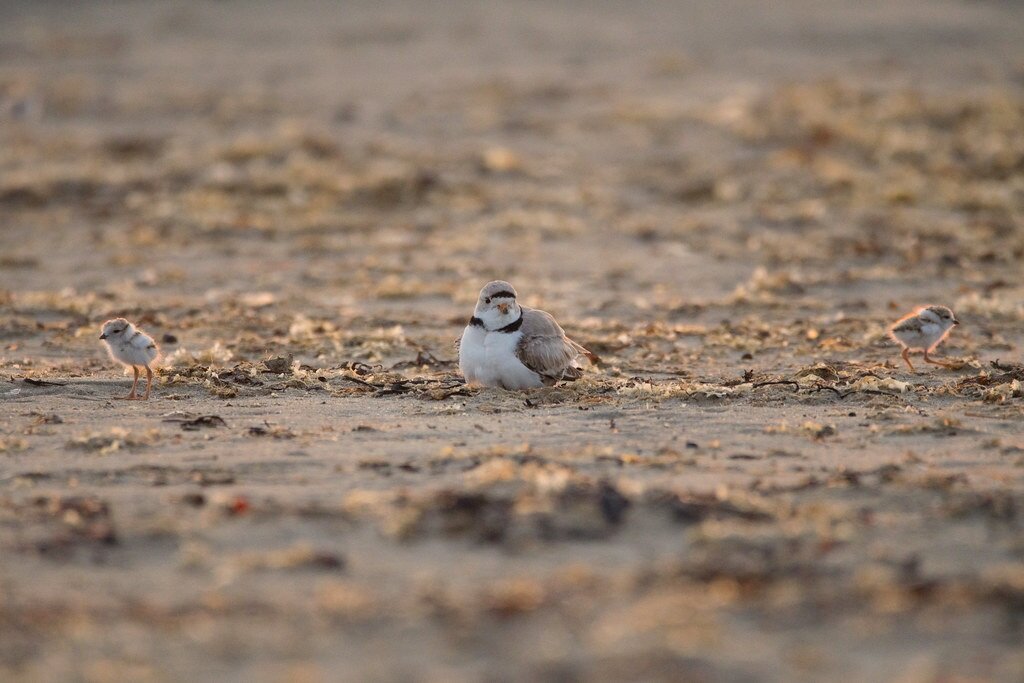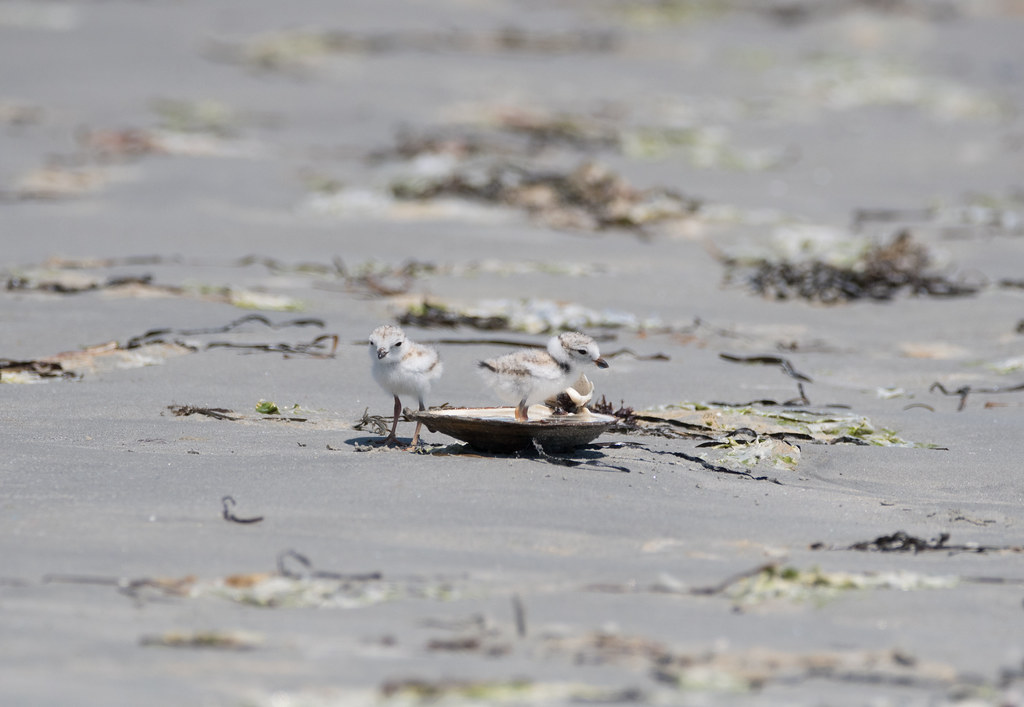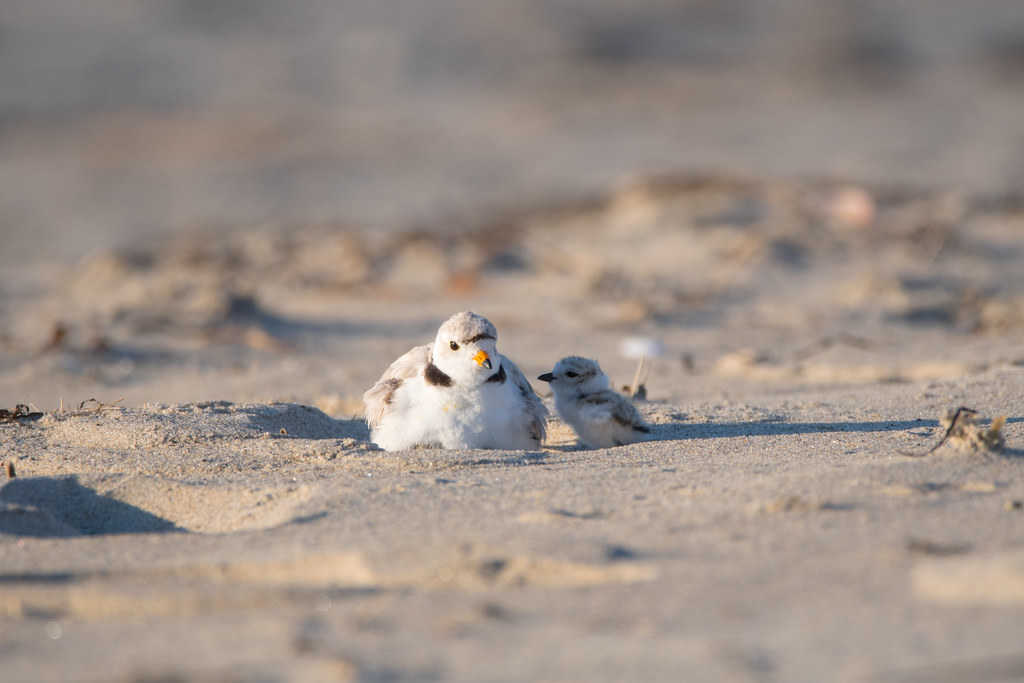By: Melanie Gárate, MyRWA Climate Resiliency Project Manager
Adult plover and chick by Savannah Kitchin
Every year the Mystic River watershed gains a few residents on the shores of Winthrop and Revere, just in time for the breeding season: the piping plovers. These small, sand-colored shorebirds, about a quarter the size of an adult gull, migrate from the Bahamas and Southeast coast of the US to lay their eggs and build families in New England.
The males typically arrive first, ready to claim their territory on the beach. Plovers generally choose areas within the beach that have bare sand, rather than rocky areas or in the dunes (though there is always the exception to the rule). They make simple nests, called scrapes, which are small depressions in the sand decorated by small rocks or shells. The males make several scrapes for the females to choose from and then they show off their best moves for the females in a mating dance called “high-stepping”. Once the female chooses her partner and scrape, she lays four eggs. The pair then practices equal parenting and takes turns incubating the eggs for 26 days, switching every 20 minutes. The long duration of incubation has its benefits, as the young plover chicks hatch with the ability to walk and feed on their own, only after a few hours of hatching. This phenomenon, termed precocial, occurs frequently in shorebirds and other ground nesters.
Though the birds camouflage perfectly with the surrounding sand (even the most trained eyes need binoculars to spot them), plovers have several natural predators, such as raptors, small mammals, gulls and crows. Human influence, such as coastal development, recreation and pollution, has had a significant impact on their population decline and led to their threatened status. Piping plovers nest above high tide and feed off of the intertidal. Sea level rise due to climate change is decreasing or entirely eliminating their nesting habitat. Increasing storms and their intensity can wash out eggs or young chicks. However, through the protection by the Endangered Species Act, these resilient birds have significantly increased in population in the past few decades. In order to prevent loss of nesting sites, eggs and chicks, conservation ecologists monitor the plovers and erect fencing around their nesting habitat. Conservation support is critical for their survival and a large part of their success in protecting these species is owed to local community support.
Share the shore
Plovers are a sign that there is good habitat and water quality. By protecting plover nesting sites, we are also protecting the beach habitat where we love to recreate! Continued community support for the conservation efforts of these species has increased their resilience.
There are many simple things that you can do to help these birds survive and flourish for generations to come. When you go to your favorite beach that is co-inhabited by plover families, please respect the dog rules, stay out of fenced nesting habitat, and take your trash with you to avoid attracting predators, like gulls and crows. Most importantly, keep your distance from the birds and observe them from afar. If you get too close, they feel threatened and may leave their eggs/chicks unattended and lead to an increase in predation. These simple actions have already made a big difference! Lastly, if you run into a coastal biologist, don’t forget to give them a quick smile or “thank you” for staying out in the sun all summer to protect our shores!
Learn More
When do the Piping Plovers arrive?









